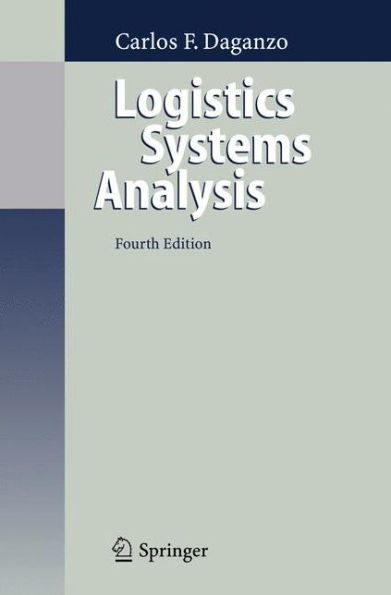This expanded edition of ALogistics Systems Analysis@ includes new - search results and numerous modifications to enhance comprehensiveness and clarity. It has two new sections, a new appendix, and more than half a dozen new figures. A few references have also been added, but the bibli- raphy is not exhaustive. Much of the new material is based on work by Profs. Alan Erera (Georgia Tech), Karen Smilowitz (Northwestern U. ), and by PhD candidate Yanfeng Ouyang (U. C. Berkeley). Their help is gratefully acknowledged. The financial support of the National Science Foundation and the Volvo Foundations Center of Excellence for the Future of Urban Transportation at U. C. Berkeley is also acknowledged. The new appendix presents the logic behind the traveling salesman and vehicle routing results used in Sec. 4. 2 to describe the transportation ope- tion; Chapter 4 is more self-contained as a result. New section 5. 6 int- duces and evaluates a general method that automatically translates the c- tinuum approximation recipes of Chapters 4 and 5 into discrete system designs. This closes a gap in previous editions. Other additions include an explanation of how to develop system designs that can efficiently acc- modate real-time control strategies to manage uncertainty (new section 4. 6. 3), and extensions of the many-to-many design ideas of Chap. 6 (in - panded section 6. 5. 3). An errata corrigendum will be posted on the - thors=s web site: http://www. ce. berkeley.
1100409209
Logistics Systems Analysis
This expanded edition of ALogistics Systems Analysis@ includes new - search results and numerous modifications to enhance comprehensiveness and clarity. It has two new sections, a new appendix, and more than half a dozen new figures. A few references have also been added, but the bibli- raphy is not exhaustive. Much of the new material is based on work by Profs. Alan Erera (Georgia Tech), Karen Smilowitz (Northwestern U. ), and by PhD candidate Yanfeng Ouyang (U. C. Berkeley). Their help is gratefully acknowledged. The financial support of the National Science Foundation and the Volvo Foundations Center of Excellence for the Future of Urban Transportation at U. C. Berkeley is also acknowledged. The new appendix presents the logic behind the traveling salesman and vehicle routing results used in Sec. 4. 2 to describe the transportation ope- tion; Chapter 4 is more self-contained as a result. New section 5. 6 int- duces and evaluates a general method that automatically translates the c- tinuum approximation recipes of Chapters 4 and 5 into discrete system designs. This closes a gap in previous editions. Other additions include an explanation of how to develop system designs that can efficiently acc- modate real-time control strategies to manage uncertainty (new section 4. 6. 3), and extensions of the many-to-many design ideas of Chap. 6 (in - panded section 6. 5. 3). An errata corrigendum will be posted on the - thors=s web site: http://www. ce. berkeley.
169.0
Out Of Stock
5
1

Logistics Systems Analysis
296
Logistics Systems Analysis
296Paperback(Fourth Edition 2005)
$169.00
Related collections and offers
169.0
Out Of Stock

Product Details
| ISBN-13: | 9783642062940 |
|---|---|
| Publisher: | Springer Berlin Heidelberg |
| Publication date: | 11/09/2010 |
| Edition description: | Fourth Edition 2005 |
| Pages: | 296 |
| Product dimensions: | 6.10(w) x 9.25(h) x 0.03(d) |
From the B&N Reads Blog
